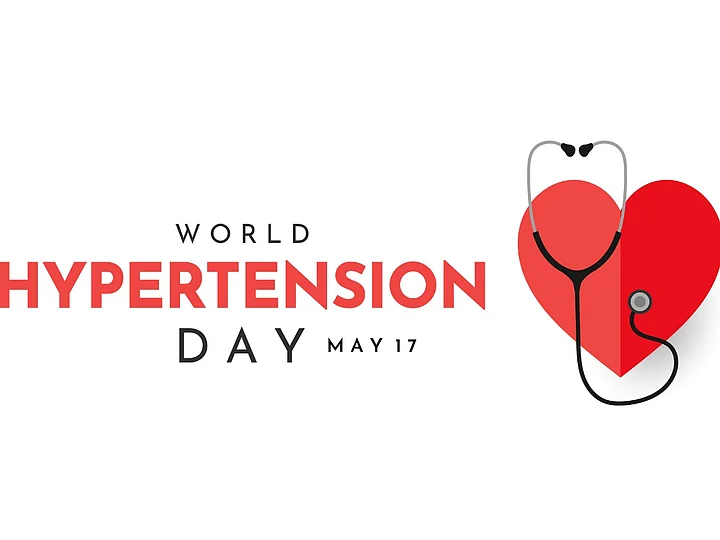In some clinic somewhere in Ibadan, a 50-year old woman has just rushed in to see the doctor. As she settles into the chair, a young nurse straps a cuff on her left arm and within seconds, announces a reading: “120/90 mmHg.” She sighs in relief and proceeds to the examination room. What she doesn’t know is that the rushed process with no rest, wrong position and cuff size may have blurred a dangerous reality.
Across clinics in Nigeria, this critical, yet overlooked issue persists: inaccurate blood pressure measurement. Blood pressure readings are foundational to diagnosing and managing hypertension. Yet, in many health facilities, they are treated as a quick formality rather than the precise clinical procedure they are meant to be, like many other routine procedures. As a result, several people are misclassified–placed on lifelong medication needlessly, or left vulnerable to undetected cardiovascular risks.
Today, May 17, is World Hypertension Day with the theme “Measure Your Blood Pressure Accurately, Control It, Live Longer.” And here in Nigeria, it might just be a jarring reminder that we haven’t even gotten past the first step of measuring right.
According to the Lancet Commission on Hypertension, a 5 mmHg error, common with improper techniques, could misclassify up to 84 million people globally. For Nigeria, a country with a lot of underdiagnosed hypertension cases, this is an important statistic. During the May Measurement Month campaign, 36.2% of adult Nigerians screened were hypertensive. Of these, just 12.9% were receiving treatment, and nearly 60% of those treated still had uncontrolled blood pressure. These figures don’t account for mis- and un-diagnoses.
A 2020 study in a Nigerian primary care clinic found that 64.6% of patients had significantly higher blood pressure readings when standard guidelines were strictly followed compared to the usual quick checks. Letting the patient rest for five minutes, using the right cuff, ensuring the arm is at heart level, made all the difference, but these are commonly ignored in routine practice.
Another study showed that 98.6% of final-year dental students and house officers measured BP incorrectly. Nearly half had poor knowledge of correct procedures. In a hypertension clinic in Southwest Nigeria, 98.5% of nurses and over half of doctors displayed end-digit preference, rounding BP values to the nearest zero, a seemingly minor issue which can, however, lead to diagnostic errors.
Then there is the widespread belief in Nigeria that blood pressure should always be measured on the left arm because “it is closer to the heart.” However, clinical guidelines recommend measuring both arms during the initial check and then using the one with the higher value going forward. Neglecting this can lead to underdiagnosis and create a false sense of health.
The American Medical Association (AMA) outlines four main sources of BP measurement error:
- Patient-related: Talking, walking, a full bladder, caffeine, or anxiety can throw off numbers.
- Procedure-related: Crossed legs, incorrect cuff size, measuring over clothing, or placing the arm below heart level can introduce errors of up to 23 mmHg!
- Device-related: Faulty or unvalidated monitors are common.
- Time constraints: Proper BP measurement takes 8 minutes. Most clinics barely spare two.
Where Do We Go From Here?
Addressing the issues of inaccurate blood pressure management requires different solutions. First and foremost, there must be an overhaul in the training and retraining of healthcare professionals with standardised instructions integrated into the curricula and periodic checks to ensure competency. Clinical settings must also adopt and enforce these standard protocols, ensuring patients rest before measurement, correct arm positioning and eliminating distractions such as talking or movement during the process. Visual reminders such as posters or checklists should be placed in examination rooms to reinforce proper procedure. It should also be ensured that reliable equipment are provided at scale to help facilities. These equipment should be regularly audited and calibrated to ensure quality assurance.
In parallel, patients should be educated on what proper blood pressure measurement entails to encourage them to advocate for themselves when procedures are not properly followed. Public health campaigns and community outreach programs can help with this. Finally, national guidelines should mandate that initial blood pressure measurements be taken in both arms, with subsequent measurements based on the higher value. Treating accurate blood pressure measurement as an important health imperative instead of a routine chore would greatly help prevent misdiagnosing and mismanaging hypertension.
It’s another World Hypertension Day and although for many, it’s just another day of hurried measurements, faulty readings, and missed diagnoses, if we do stop treating blood pressure like a clerical task, and start giving it the precision and respect it demands we will successfully tackle the silent epidemic of undiagnosed hypertension in Nigeria.
References
- Ojo OS, Egunjobi AO, Fatusin AJ, et al. (2020). Variation between pragmatic and standardised blood pressure measurements in a Nigerian primary care clinic. South African Family Practice, 62(1):e1-e11.
- Berg S. (2025). 4 big ways BP measurement goes wrong, and how to tackle them. American Medical Association.
- Ayodele OE, Sanya EO, Okunola OO, Akintunde AA. (2012). End digit preference in BP measurement in Nigeria. Cardiovascular Journal of Africa, 23(2):85-9.
- Ogah OS, Arije A, Xin X, et al. (2019). May Measurement Month 2017: Nigeria—Sub-Saharan Africa. Eur Heart J Suppl, 21(Suppl D):D86-D88.
- Ibiyemi O, Ogunbodede O, Gbolahan OO, Ogah OS. (2020). Knowledge and Practices of BP Measurement among Dental Students and Officers in Nigeria. Nigerian Journal of Clinical Practice, 23(6):848-856.

